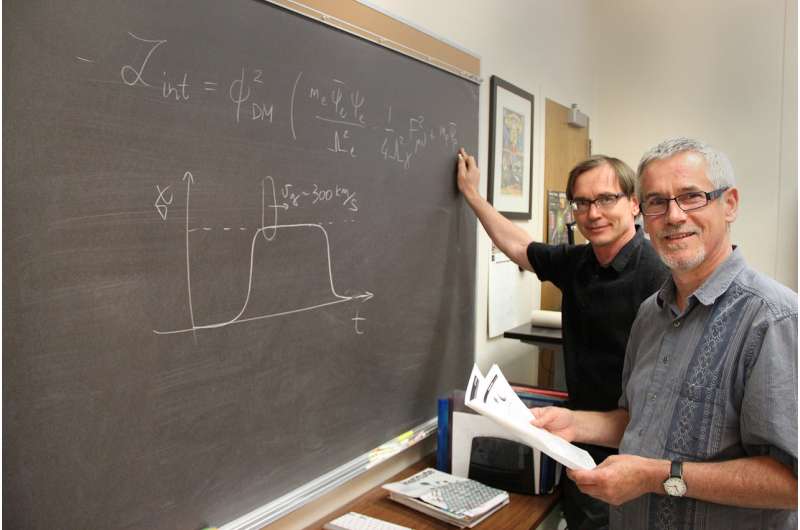One step closer to defining dark matter, GPS satellite atomic clocks on the hunt

One professor who studies the earth and one who studies space came together in the pursuit to detect and define dark matter. They are one step closer. Using 16 years of archival data from GPS satellites that that orbit the earth, the University of Nevada, Reno team, Andrei Derevianko and Geoff Blewitt in the College of Science, looked for dark matter clumps in the shape of walls or bubbles and which would extend far out beyond the GPS orbits, the solar system and beyond.
A scientific article of the team's work was just published in the journal Nature Communications and just in time for Dark Matter Day, Oct. 31. Dark matter makes up 85 percent of all matter in the universe. While there are multiple astrophysical evidences for dark matter, its nature remains a great mystery. Many forms for dark matter have been hypothesized, theirs is that this form of dark matter, arising from ultralight quantum fields, would form macroscopic objects.
"We are another step closer to discovering how to detect dark matter, and ultimately to define more accurately what it is, what kind of particle it is" Derevianko said. "Mining these archival data, we found no evidence for domain walls of ultralight dark matter at our current sensitivity level. However, this search rules out a vast region of possibilities for this type of dark matter models."
The team focused on ultralight fields that might cause variations in the fundamental constants of nature - such as masses of electrons and quarks and electric charges. The variations could lead to shifts in atomic energy levels, which may be measurable by monitoring atomic frequencies. That's where the GPS satellites come in. Global positioning system navigation relies on precision timing signals furnished by atomic clocks.
"Geoff has been using the atomic clocks on the GPS satellites in his geodetic work - measuring uplift of tectonic plates, the shape of the earth, earthquakes, global sea levels, so is familiar with the precision of the system," Derevianko said. "I've worked on devising more accurate atomic clocks. We realized the GPS system could be used to detect listen to the dark matter sweeping through us.
"Instead of spending billions of dollars to eliminate some plausible dark mater models, we repurposed these common tools (GPS atomic clocks) we use every day to do basic, fundamental science to look for the answers to this great mystery - to devise our own planet-sized dark matter detector."
Speeding through the galaxy
The Earth is speeding through the Milky Way dark matter halo at 300 kilometers per second or one-one thousandth the speed of light. And dark matter clumps are estimated to take 3 minutes to cross the GPS constellation.
"It's like a wall moving through a network of clocks causing a wave of atomic clock glitches propagating through the GPS system at galactic speeds," Derevianko, a professor of quantum physics, said. "The idea is that when the clump overlaps with us, it pulls on the particle masses and forces acting between the particles. Mind you this pull is really weak, otherwise we would have noticed it. However, ultra-sensitive devices like atomic clocks could be sensitive to such pulls."
They looked for the predicted patterns of clock glitches, as the earth, and the satellites, moved through the halo of dark matter in the galaxy. The data came from the 32 satellites in the 31,000-mile-wide GPS network and ground-based GPS equipment, every 30-seconds for 16 years. The team used data from sources around the world and in particular from the Jet Propulsion Laboratory.
"What we looked for was clumps of dark matter in the shape of walls, using a model that - if it exists - would have collisions that are evidenced in irregularities in the atomic clock signals," Benjamin Roberts, post-doctoral associate and lead author for the Nature paper, said. "While there is no definitive evidence after looking at 16 years of data, it could be that the interaction is weaker or that the defects cross paths with the Earth less often. Some markers indicate it could possibly be a smaller defect."
More information: Benjamin M. Roberts et al. Search for domain wall dark matter with atomic clocks on board global positioning system satellites, Nature Communications (2017). DOI: 10.1038/s41467-017-01440-4
Journal information: Nature Communications
Provided by University of Nevada, Reno




















